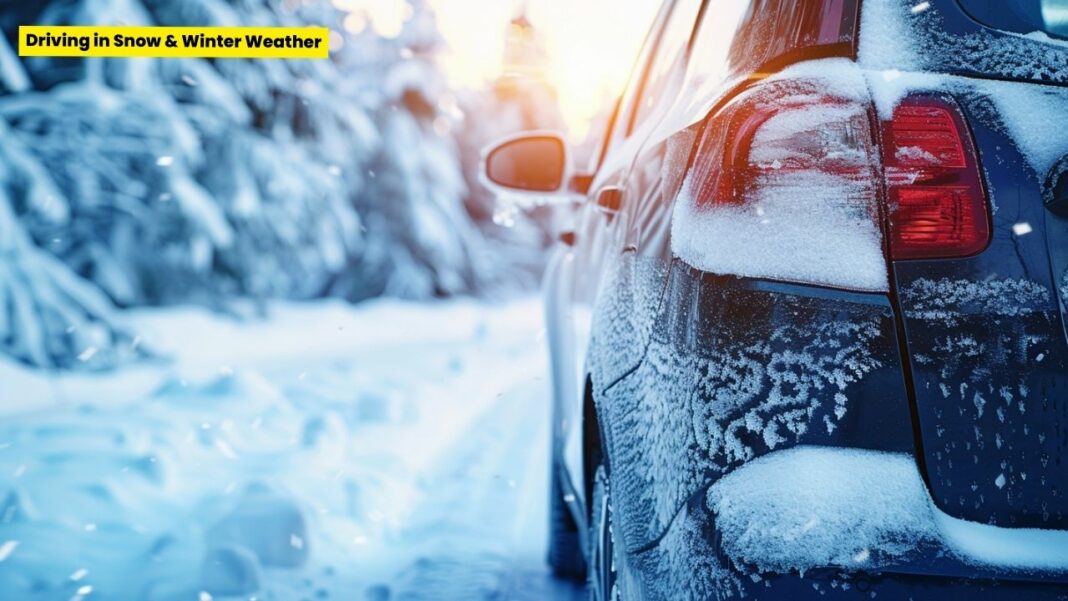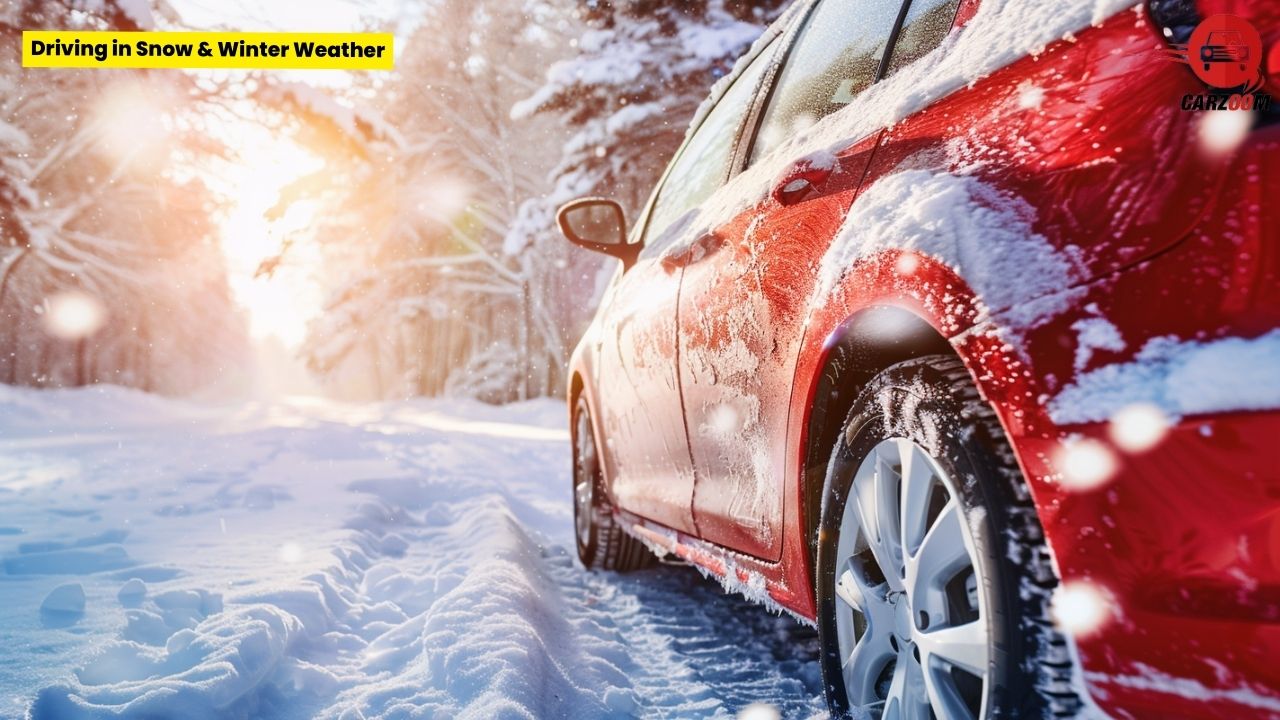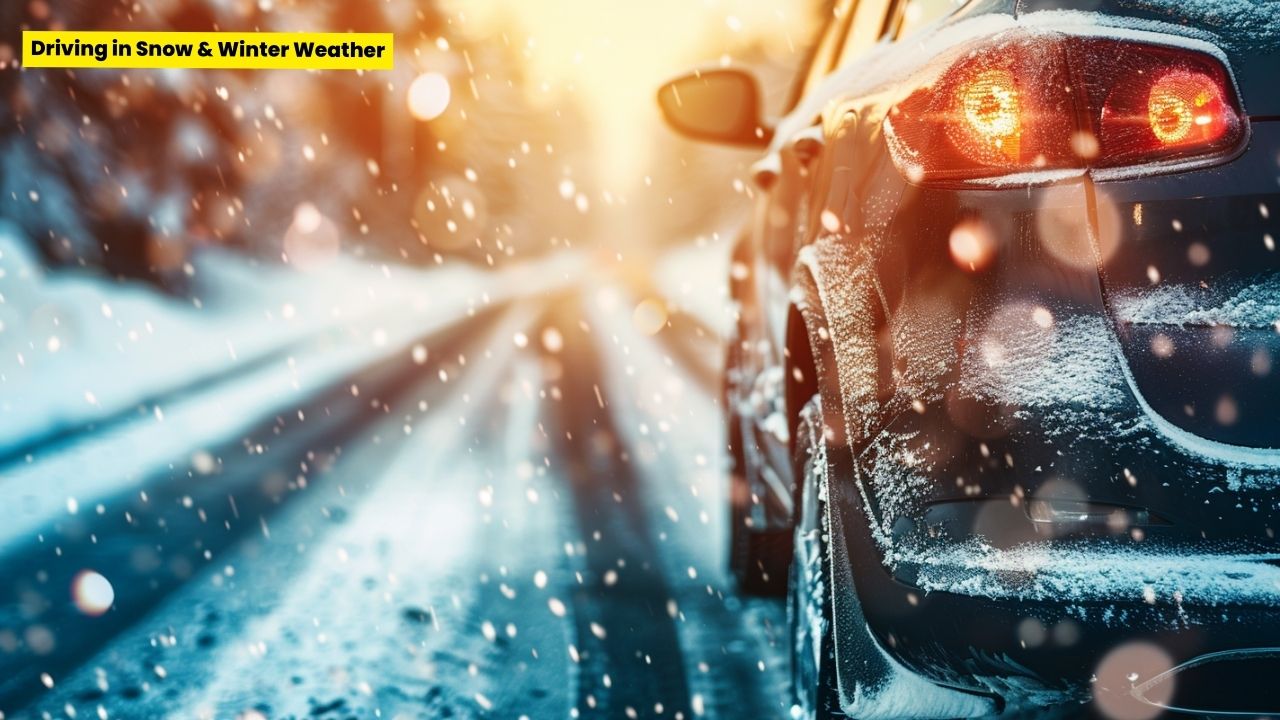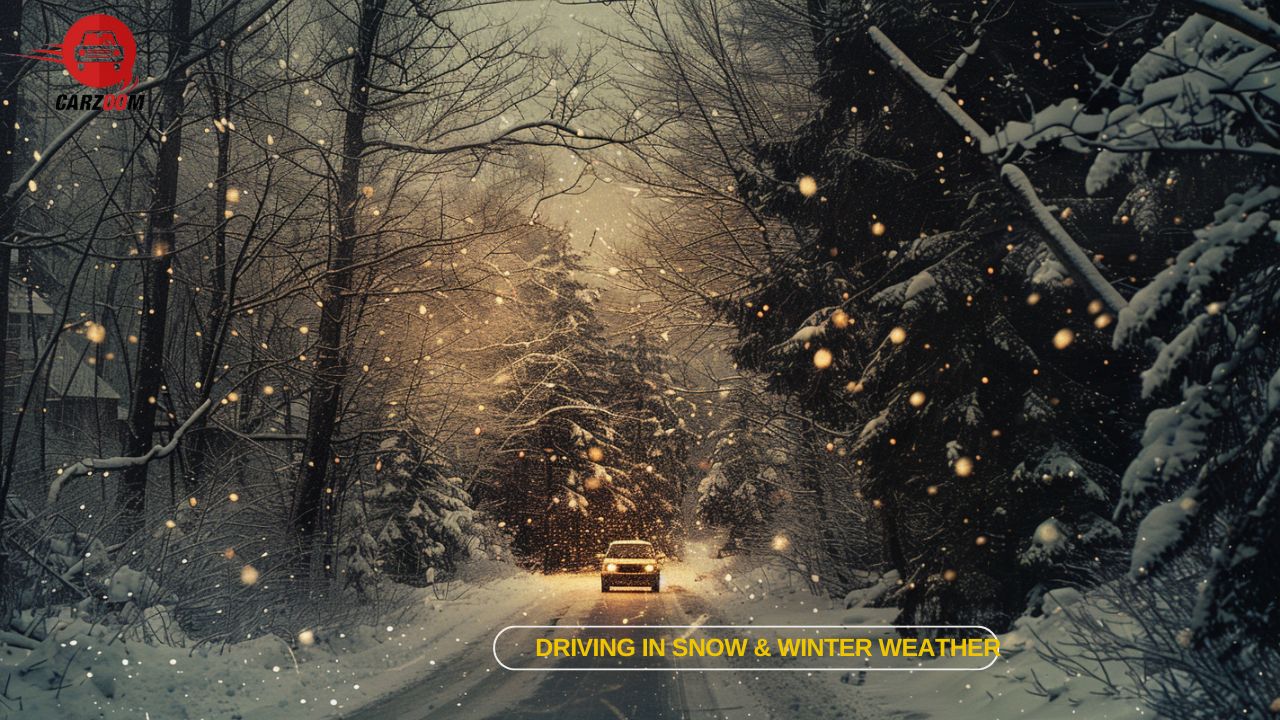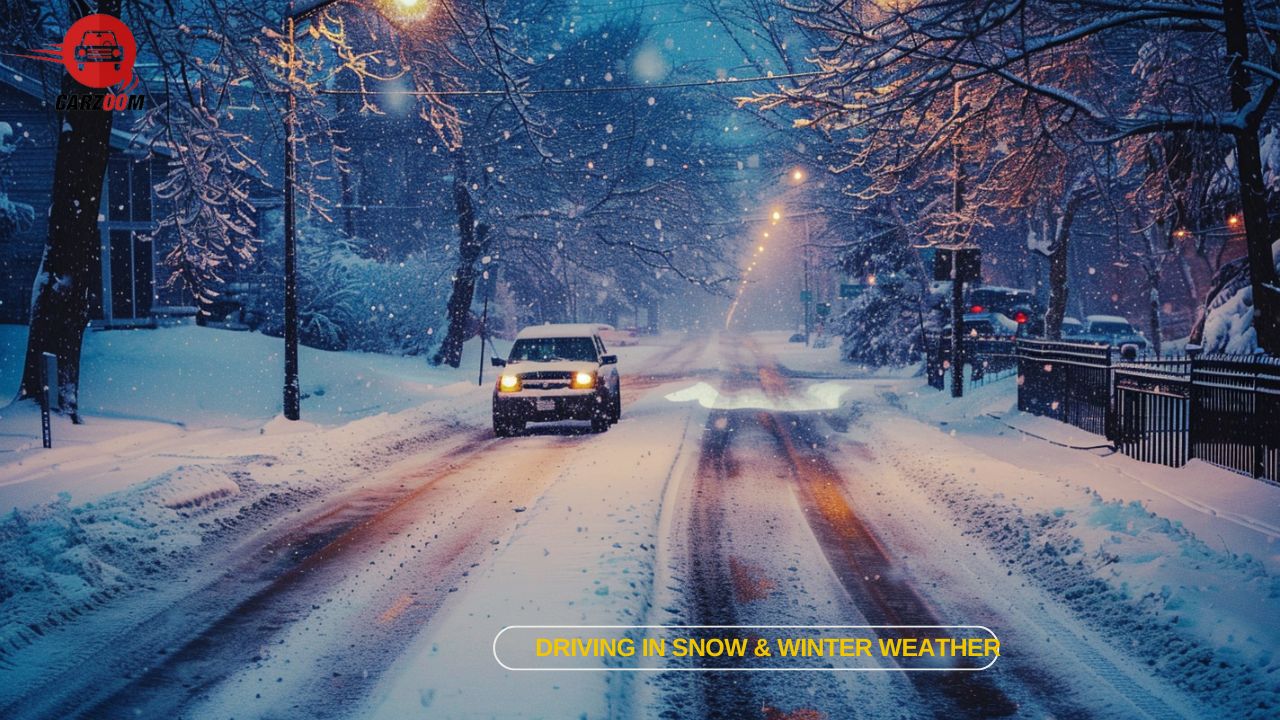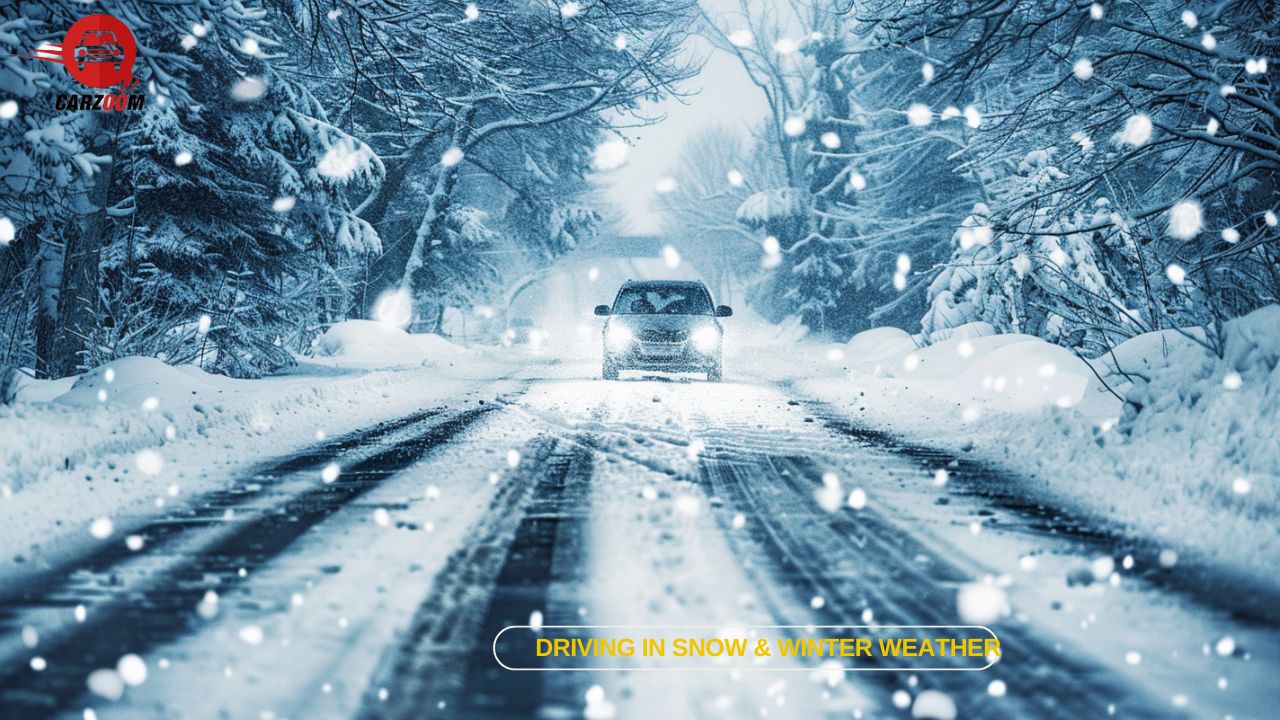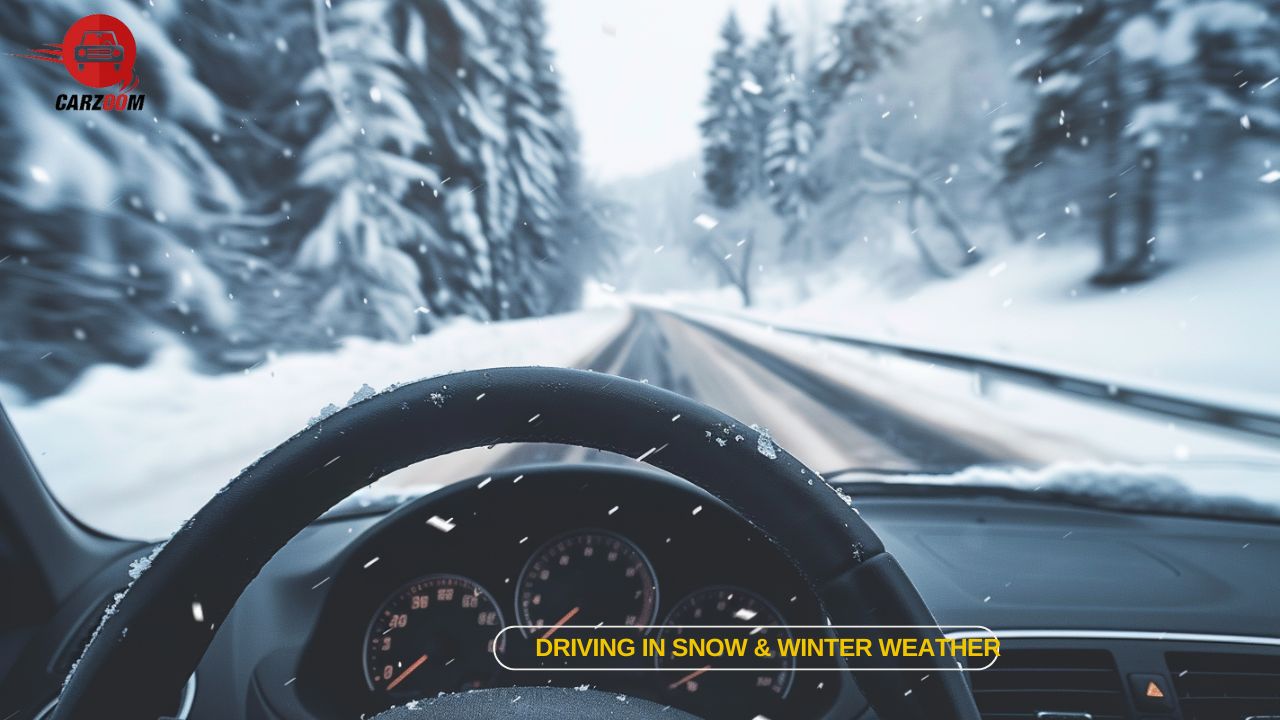7 Essential Tips for Safe Driving in Snow & Winter Weather
Driving in snowy and icy conditions can be quite challenging for many drivers. ❄️ Snow and ice can make the roads slippery, reducing your tires’ grip on the road. This makes it harder to control your vehicle and increases the risk of skidding or sliding. In addition, winter weather often comes with poor visibility due to fog, snowstorms, or frost on your windows, which can make it difficult to see other cars and obstacles. 🌨️
It’s essential to prioritize safety when driving in winter weather. You can protect yourself and others on the road by taking extra precautions and following important safety tips. 🚗 Always be mindful of changing road conditions and adjust your driving habits to stay safe during winter.
7 Essential Tips for Safe Driving in Snow & Winter Weather
1. Prepare Your Vehicle:
To stay safe while driving in snow and winter weather, the first step is to prepare your vehicle properly. 🌨️
Check Tires: Make sure your tires have the proper tread depth and pressure. Good tread helps your tires grip the road better, reducing the risk of skidding. Properly inflated tires provide better control of your vehicle on slippery surfaces. 🛞
Clear Windows and Mirrors: It’s essential to keep your windows and mirrors free from snow and ice. This will give you a clear view of the road and your surroundings, helping you avoid accidents. Use a scraper or de-icer to clear any snow or ice from your windshield, windows, and mirrors before you set off. ❄️
Taking these steps will ensure that your vehicle is ready for winter driving conditions and will help keep you safe on the road.
2. Drive Slowly and Cautiously
When driving in snow and winter weather, it’s crucial to slow down and be extra cautious. 🚗
Reduce Speed: Lowering your speed helps you maintain control of your vehicle on slippery roads. It also gives you more time to react to unexpected situations. Always adjust your speed to match the road conditions.
Maintain a Safe Following Distance: Keep a greater distance between your car and the vehicle in front of you. This gives you more space to stop safely if the other vehicle suddenly brakes.
Avoid Sudden Movements: Quick actions like harsh braking or sharp turns can cause your vehicle to lose traction on icy or snowy roads. Instead, ease into your brakes and turns smoothly to maintain control.
By driving slowly and cautiously, you can navigate winter road conditions more safely and reduce the risk of accidents. 🌨️
3. Watch Out for Black Ice
Black ice is a sneaky danger when driving in winter weather. 🧊 It’s a thin layer of ice that forms on the road and can be very hard to see because it often looks like the road is just wet. This makes it extremely slippery and can cause your car to slide unexpectedly.
When driving, be especially cautious in shaded areas where the sun doesn’t reach, like under bridges or trees, because these spots tend to have more black ice. 🌲 Look out for shiny areas on the road, as these might be black ice.
To stay safe, drive slowly and keep a good distance from other vehicles. If you feel your car sliding, try to stay calm and gently steer in the direction you want to go. Always keep an eye out for black ice so you can react quickly if needed. 🚗
4. Use Low Beams in Poor Visibility
In winter weather, poor visibility can make driving more challenging. 🌨️ One way to stay safe on the road is to use your headlights correctly.
Keep Headlights on Low Beams: When visibility is low due to fog, snow, or heavy rain, use your low-beam headlights. This helps you see the road ahead more clearly and makes your car visible to other drivers.
Using high beams in poor visibility can make things worse. The bright light can reflect off fog or snow, creating a glare that makes it even harder to see. By sticking to low beams, you avoid this problem and keep your vision clear. 💡
Remember, using your low-beam headlights in poor visibility not only helps you see better but also keeps you safer on the road. 🚗
5. Keep Your Distance
In winter weather, maintaining a safe distance from other vehicles is essential for your safety on the road. 🚗
Keep Ample Distance: Allow extra space between your car and the one in front of you. This gives you more time to react if the other driver suddenly breaks or if something unexpected happens.
On snowy or icy roads, stopping distances increase because your tires may not grip the road as well. By keeping a larger following distance, you can avoid rear-ending another car or getting into an accident. 🚦
A good rule of thumb is to stay at least three to four seconds behind the car ahead. In poor weather conditions, it might be wise to increase this distance even more. Being cautious and giving yourself extra room will help keep you and others on the road safe. 🌨️
6. Stay Alert and Avoid Distractions
Staying alert and avoiding distractions is crucial for safe driving in winter weather. 🚗
Stay Focused on the Road: Winter conditions can be unpredictable, so it’s important to pay close attention to your surroundings. Keep your eyes on the road and your mind focused on driving.
Avoid Using Electronic Devices: Distractions like texting or using your phone can take your attention away from the road. In winter weather, you need to be extra vigilant because the road can change suddenly. Avoid using your phone or other devices while driving.
By staying alert and minimizing distractions, you can better react to sudden changes in road conditions and reduce the risk of accidents. 🌨️ Keep your hands on the wheel and your mind on driving to stay safe in winter weather.
7. Be Prepared for Emergencies:
Being prepared for emergencies is essential when driving in snow and winter weather. 🌨️ You never know when you might encounter unexpected situations, such as your car breaking down or getting stuck in the snow.
Carry an Emergency Kit: Pack a kit with important items that can help you if you face an emergency on the road:
- Blankets: Keep warm if you need to wait in your car for help.
- Food and Water: Have non-perishable snacks and water to stay nourished and hydrated.
- Flashlight: Use a flashlight to signal for help or to navigate in the dark.
Other useful items for your emergency kit may include a first aid kit, a shovel for clearing snow, an ice scraper, and extra warm clothing. 🛑
By carrying an emergency kit, you’ll be better prepared to handle unexpected situations on the road and stay safe until help arrives. 🚗
Conclusion
Driving safely in snow and winter weather requires preparation and caution. By following the essential tips provided, you can protect yourself and others on the road:
- Prepare your vehicle by checking your tires, windows, and mirrors.
- Drive slowly and cautiously, reducing your speed and avoiding sudden movements.
- Watch out for black ice and keep an eye out for shaded or sheltered areas on the road.
- Use low beams in poor visibility to avoid glare and improve your ability to see the road.
- Maintain a safe distance from other vehicles to give yourself more reaction time.
- Stay alert and avoid distractions by focusing solely on the road.
- Be prepared for emergencies by carrying an emergency kit with essential items.
Remember, safety should always be your top priority when driving in winter conditions. By being mindful of these tips and taking extra precautions, you can navigate snowy and icy roads more safely. Share this knowledge with others to help keep everyone on the road safe during the winter season. 🌨️🚗
How much did you like Our detailed 7 Essential Tips for Safe Driving in Snow & Winter Weather? Review Also, please share these Blogs with your friends on social media.
Recommended
















